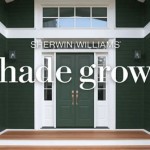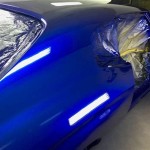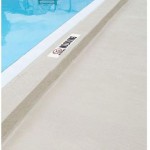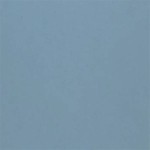How Many Diamond Painting Colors Are There?
Diamond painting, a popular crafting hobby, involves adhering tiny, resin-based “diamonds” to a pre-printed adhesive canvas to create a sparkling mosaic image. A significant element of diamond painting lies in the variety of colors used to bring these images to life. The question of how many diamond painting colors are available is not a simple one, as the number can vary depending on several factors. Understanding these factors offers a clearer picture of the available palette for diamond painting projects.
The number of colors available in diamond painting is directly tied to the DMC (Dollfus-Mieg et Compagnie) color chart, a standardized system used primarily in cross-stitch and embroidery. This chart assigns specific numbers to different shades of thread, and diamond painting manufacturers often adapt these numbers to represent their diamond colors. The adaptation allows for cross-compatibility and provides a recognizable reference point for crafters familiar with other needlework techniques.
The DMC color chart contains approximately 500 colors, encompassing a wide spectrum of hues, tints, and shades. However, not all 500 DMC colors are universally available in diamond painting form. The selection offered by individual manufacturers and in specific kits can differ considerably. Some kits might feature a limited palette of only a dozen or so colors, while more complex and detailed designs can incorporate upwards of fifty or even a hundred different shades.
The complexity and realism of the intended image are major determinants of the number of colors used in a diamond painting. Simpler designs, such as cartoon characters or basic patterns, can be effectively rendered with a smaller color range. More intricate scenes, like landscapes or portraits, require a broader spectrum to capture subtle variations in light, shadow, and texture. The desire for photorealism necessitates a finer gradation of colors to achieve a convincing representation of the original image.
Beyond the standard DMC colors, some manufacturers also offer specialty diamonds, further expanding the color possibilities. These specialty diamonds can include iridescent, metallic, or glitter-infused varieties, adding unique visual effects to the finished artwork. The availability of these specialty diamonds is not consistent across all brands and may be limited to certain kits or sold separately. Their inclusion greatly increases the potential color combinations and artistic expression possible with diamond painting.
The method of color mixing and shading also plays a role in the perceived variety of colors. Even with a limited number of distinct diamond colors, skilled designers can create the illusion of a wider palette through careful placement and blending. By strategically positioning slightly different shades next to each other, they can achieve a subtle gradient effect that enhances the depth and realism of the image. This technique is particularly effective in representing smooth transitions in color, such as those found in sunsets or skin tones.
The type of diamond also influences the way colors appear. Square diamonds, which fit snugly together without gaps, tend to create a more uniform and pixelated look. Round diamonds, on the other hand, leave small spaces between each diamond, allowing the canvas underneath to peek through. This can subtly alter the perceived color of the diamonds, especially when viewed from a distance. The choice between square and round diamonds is often a matter of personal preference, but it's important to consider how it might affect the overall color rendering of the finished artwork.
The quality of the diamonds themselves can also impact the accuracy and vibrancy of the colors. High-quality diamonds will be uniformly colored and consistently shaped, ensuring a smooth and even distribution of light. Lower-quality diamonds may exhibit variations in color or inconsistencies in size, which can detract from the overall appearance of the finished painting. Investing in reputable brands and carefully inspecting the diamonds before starting a project can help to ensure the best possible color results.
The printing process used to create the adhesive canvas also affects the final appearance of the colors. A high-quality print will accurately reproduce the intended color palette and provide clear and precise symbols for each diamond. A poorly printed canvas may have faded or inaccurate colors, making it difficult to match the correct diamonds and achieve the desired effect. It’s crucial to select kits from trusted manufacturers known for their attention to detail and quality control.
The way light interacts with the diamonds also contributes to the perceived color variety. The facets of the diamonds reflect light in different directions, creating a sparkling effect that enhances the vibrancy of the colors. The type of lighting used to view the finished painting can significantly influence its appearance. Natural light tends to bring out the subtle nuances of the colors, while artificial light can create a more dramatic and intense effect. Experimenting with different lighting conditions can reveal the full potential of the diamond painting's color palette.
The choice of subject matter can also dictate the number of colors required. Images featuring a wide range of natural elements, such as flowers, forests, or oceans, typically necessitate a larger color palette to accurately capture the diverse hues and shades. Conversely, abstract designs or minimalist compositions may require only a limited number of colors to achieve the desired effect. The artists' intent behind the design shapes the number and arrangement of colors.
The individual's perception of color is also a factor. Personal preferences for certain colors or shades can influence the choice of diamond painting kits and the way they are perceived. Some individuals may be more sensitive to subtle differences in color than others, leading to different interpretations of the same image. Color perception is subjective and can vary significantly between individuals.
DMC Color Chart as the Foundation
The DMC color chart serves as the standard for color identification in diamond painting. While not all DMC colors are available as diamond beads, the system provides a comprehensive and universally understood reference point. Diamond painting manufacturers often use DMC codes to label their diamond colors, allowing crafters to easily identify and match shades. This standardization simplifies the process of color selection and ensures consistency across different projects and brands.
The DMC color chart is organized into categories based on hue, saturation, and value, providing a logical framework for navigating the vast array of available colors. Each color is assigned a unique number, making it easy to communicate and track specific shades. The chart is regularly updated to reflect new color trends and technologies, ensuring that it remains a relevant and accurate resource for crafters.
The wide availability of the DMC color chart also facilitates color matching and substitution. If a particular diamond color is unavailable or desired, crafters can use the chart to find a close alternative. By comparing the DMC codes and visually assessing the colors, they can select a suitable replacement that maintains the overall aesthetic of the design. This flexibility allows for customization and ensures that projects can be completed even if certain colors are out of stock.
Factors Influencing Color Count in Kits
The number of colors included in a diamond painting kit is determined by several factors, including the complexity of the design, the desired level of detail, and the target audience. Kits intended for beginners or children often feature simpler designs with fewer colors, making them easier to complete. More advanced kits, designed for experienced crafters, typically incorporate more intricate designs and a wider range of colors to achieve a higher level of realism.
The size of the canvas also influences the number of colors used. Larger canvases can accommodate more detail and require a greater variety of colors to fill the increased surface area. Smaller canvases, on the other hand, may be limited to a smaller color palette to avoid overcrowding and maintain clarity. The canvas size and the number of colors are carefully balanced to create a visually appealing and manageable project.
The cost of the kit can also be a factor in the number of colors included. Diamond painting kits with a larger color palette typically require more diamonds, which can increase the cost of production. Manufacturers must strike a balance between providing a sufficient range of colors to create a satisfying result and keeping the price of the kit within a reasonable range. The price reflects the complexity and the use of materials involved.
Specialty Diamonds and Expanded Palettes
Beyond the standard solid-colored diamonds, specialty diamonds offer an opportunity to further expand the color palette and add unique visual effects to diamond paintings. These specialty diamonds can include iridescent, metallic, glitter-infused, or even shaped beads. Adding these specialty diamonds creates a more dynamic finished product.
Iridescent diamonds exhibit a shimmering, rainbow-like effect that changes depending on the viewing angle. Metallic diamonds have a shiny, reflective surface that adds a touch of glamour and sophistication. Glitter-infused diamonds sparkle and glitter in the light, creating a dazzling effect. Shaped diamonds, such as stars, hearts, or geometric forms, can add texture and dimension to the design.
The use of specialty diamonds is often limited to certain accents or focal points within the design, as using them too extensively can overwhelm the overall image. However, when strategically placed, they can significantly enhance the visual appeal and create a more unique and personalized work of art. The choice to incorporate specialty diamonds depends on the desired aesthetic and the skill level of the crafter.

Diamond Painting Dmc Color Printable Chart

Dmc Color Chart

Printable Dmc Color Charts Diamond Painting Drill Card With Diamonds

Dmc Color Chart For Diamond Painting Printed And Mailed Hard Copy

Diamond Painting Tips Give Your Un Numbered Diamonds A Dmc Number

Diamond Painting Dmc Color Chart Colors Char For File Art Inventory List

Missing Dmc Number 1 35

Decoding Diamond Painting Unveiling The Dmc Chart Essentials All

Dmc Color Chart Figgy Designs

Dmc Color Chart For Diamond Painting Art Club
Related Posts








